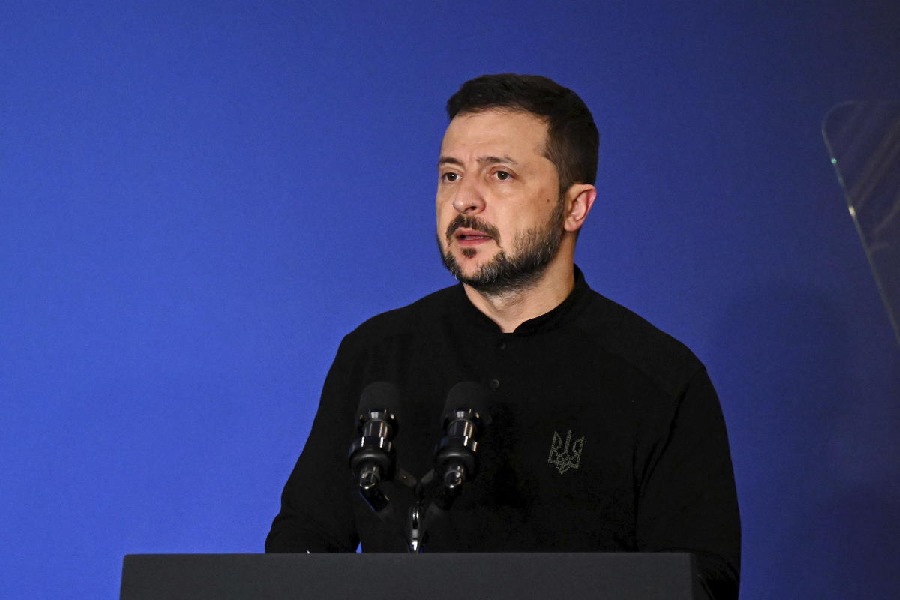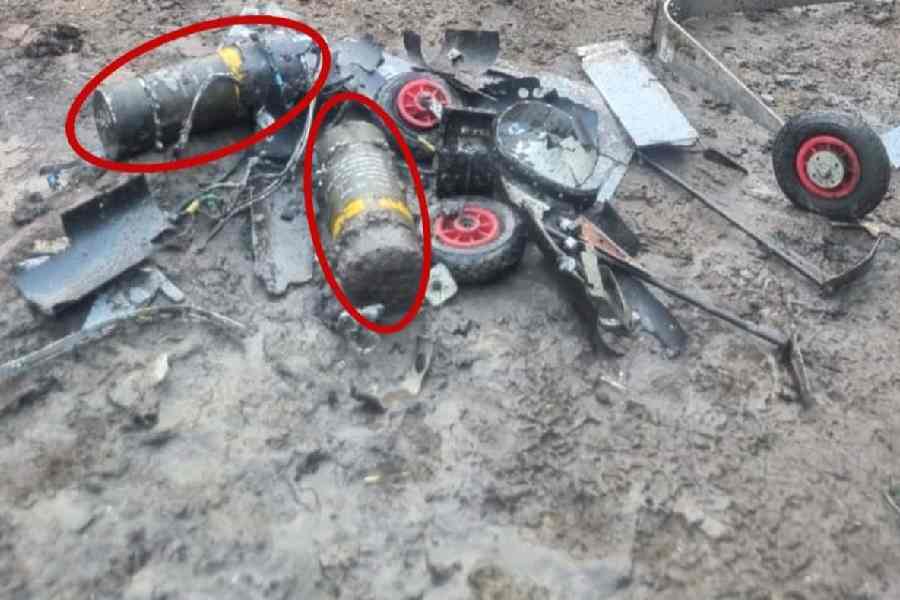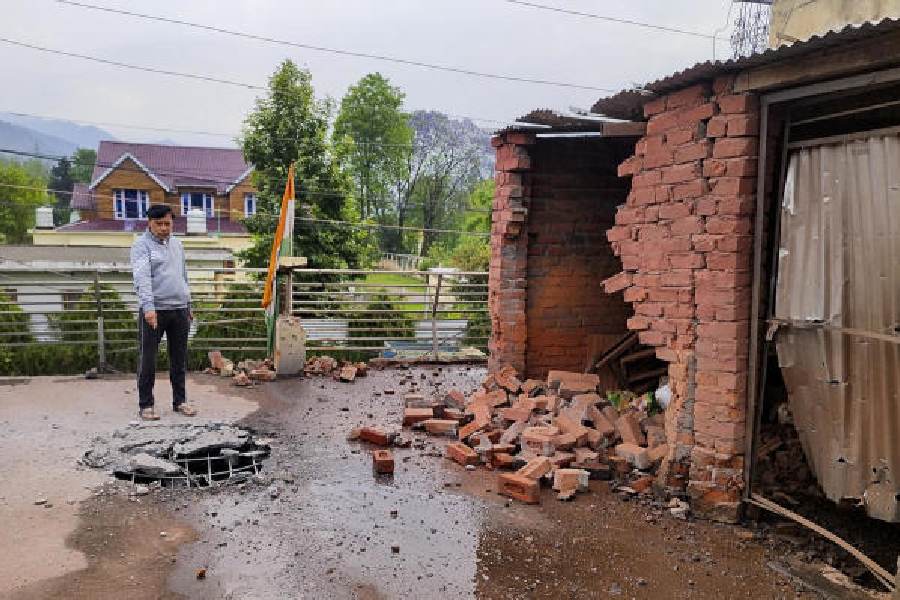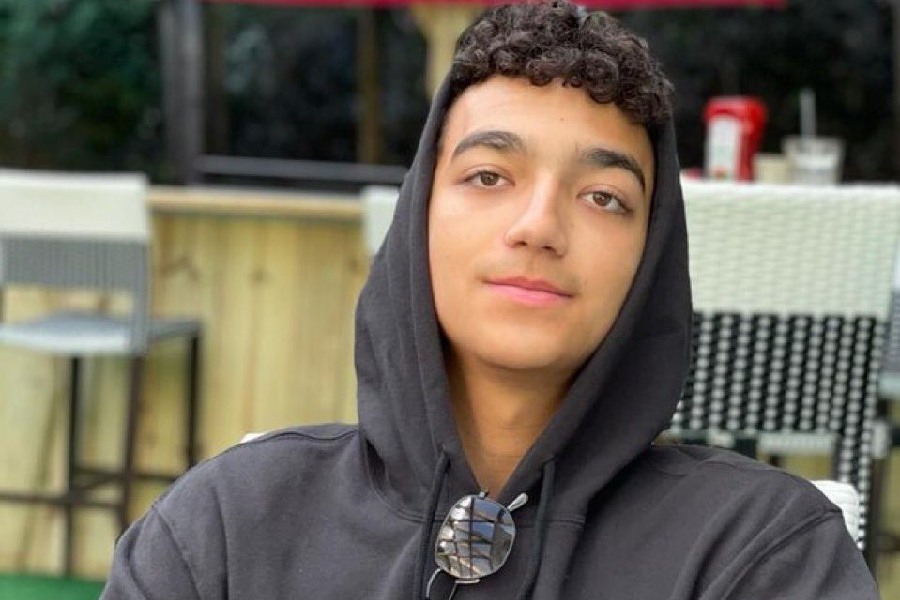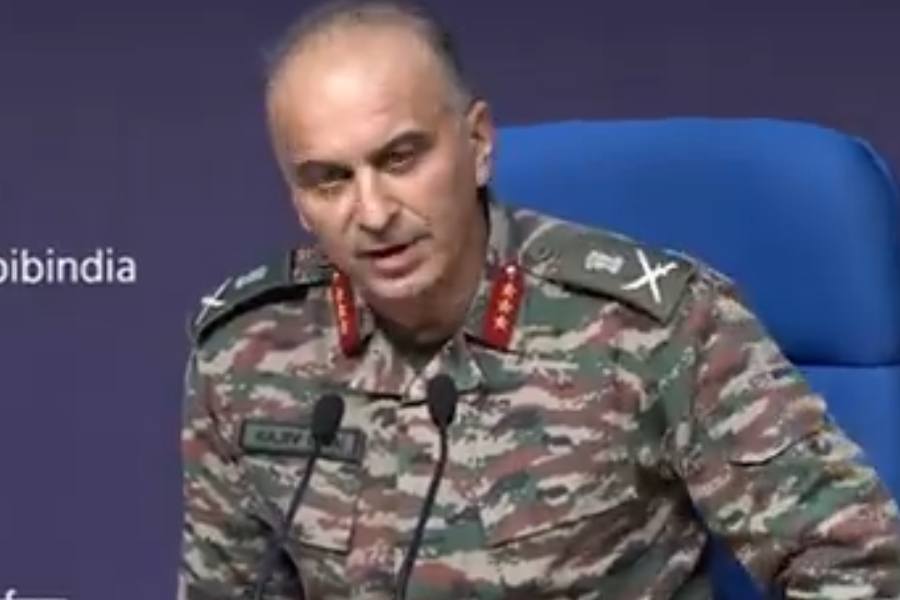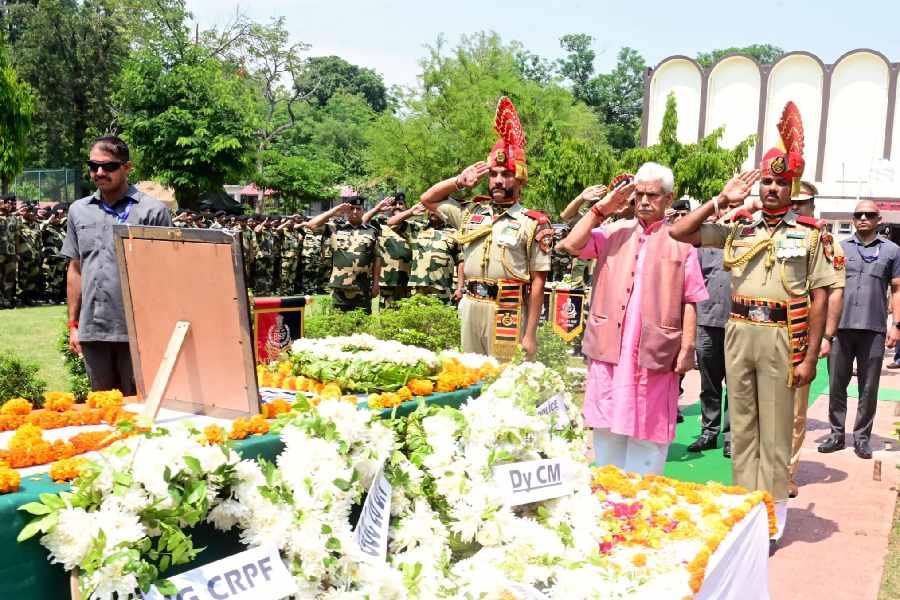 |
 |
| Pics by Sanjoy Chattopadhyay |
Spic Macay celebrated its strength of the last 35 years on the 36th through a programme that was also the first international convention to be held in IIM, Calcutta (May 20-26). It was not merely a concert but also a learning process. The stalwarts shared their experiences and students were enriched by the valuable insights gathered from the former’s performances. For example, Pandit Shiv Kumar Sharma selected Raga Puriya Kalyan to start his santoor session. He played alap, jor and jhala in the traditional way. He was keen to present the intricate techniques as well as to demonstrate the process of presentation. He also played a composition in the same raga in rupak, which was ornamented with vistaars, mirs and taans and was a pleasure for the audience. Next, he presented a ragmala based on Raga Khamaj.
Pandit Buddhadev Dasgupta, with his two sons, Bhavanishankar and Anirban, played Raga Kamod. His alap and jor were attractive, with a rare touch in the rendition of the key notes. Instead of playing jhala, he played the compositions in teentaal. His vistaars were capable enough to hold the beauty of the raga, although his taans disappointed the listeners. He also played gats in Raga Desh, which commenced with vigour and ended abruptly. The composition in Zilla Kafi composed by Ustad Amir Khan and played by him was brief but arresting. The performance of Bahauddin Dagar, the rudraveena player, in Raga Gangeyabhushani was a beautiful experience for the listeners in the night-long session. His extensive alap with enchanting vistaars and mirs created the right ambience for the raga. He played alap, jor, jhala and compositions in the same raga, and left his listeners with a desire for more.
Professor T.N. Krishnan started his lesson in violin with a famous kriti of Thyagraja in Raga Shree, through which he approached the raagam and taanam concepts of Carnatic music. He also explained pallavi or padam, layam and vinyasam by playing small pieces. His ragmala based on Raga Simhendra Madhyamam was enjoyable. The taan and vistaar presentation accompanied by mridangam and ghatam was a rare experience for the city. The audience enjoyed the violin composition of Raga Bhairavi.
But the most charismatic performance among the instrumentalists was given by Ustad Shahid Parvez Khan (picture right), who mesmerised the audience with his sitar. His alap, jor and jhala in Raga Purvi created the perfect atmosphere for this traditional, serene and quiet sunset raga. He created magical moments with the mellifluous movements of keynotes, renditions of kadi madhyam, madhyam and komal dhaivat, as well as with an exceptional and absorbing application of mir. His presentation of Raga Desh in rupak taal, with more vistaars and small but complicated taans, and his return to komal ni with a different approach was attractive.
The duo of the Benaras Gharana, Pandit Rajan and Sajan Mishra, started their vocal recital with Raga Jayjayanti. They sang a vilambit kheyal in ektaal and a drut kheyal in teentaal. Except for some lengthy and complicated taans and gamaks, it was an ordinary performance. But the tarana in the same raga was interesting. They also presented vilambit and drut kheyal in Raga Shyam Kalyan, highlighting the soothing flow of this melodious raga. But their madhyalay kheyal, “Radha ki nayan shaam”, based on Raga Shivranjani in rupak, was pleasing to the ears for its vistaars.
Pandit Ajoy Chakraborty, however, disappointed his listeners by his vilambit kheyals in Rageshree and Malkauns. His mechanical and predictable rendition made it a tedious performance. But his drut kheyal in Rageshree was rather appreciable. Wasim Ahmed Khan attracted the audience with the strength and clarity of his voice. But variation was needed in his vistaars in vilambit and drut kheyals in Raga Anandi. Pandit Ulhas Kashalkar’s vilambit and drut kheyal in Kamod was good, but his rendition in Sohini caught the attention. Also, his Kausi Kanada — especially the drut kheyal with lots of vistaars and unique taans — was praiseworthy. Because of the lethargy in his voice, the performance of the Carnatic classical artist, R. Vedavalli, was not very interesting. He presented kriti, raagam and taanam in Raga Anandabhairavi.
Another South Indian vocalist, T.V. Sankaranarayanan, gave a brief but enigmatic performance. He began with a kriti of Thyagraja, and moved to Raga Hamsanadam later. He made the performance appealing by his experiments with taan, tempo and taal. A short kriti in Raga Kirwani and a famous composition, “Krishna ni begane baro”, based on Raga Yaman, became remarkable because of the distinct and bold style of this senior artist.
But the artist who singlehandedly made this convention a gorgeous one was M. Venkatesh Kumar (picture left). The generosity of his voice and his unique style of presenting vistaars and taans signify a distinct feature of the Gwalior Gharana. He sang a vilambit kheyal in Raga Bhairav at the beginning of his performance, followed by drut kheyals in teentaal and ektaal. His powerful taan presentation, both in vilambit and drut, displayed the inner strength of this quiet, early-morning raga — for which even a widely popular composition like “Jago mohan pyare” sounded like a new one. His vilambit and drut kheyal in Raga Asavari, with a perfect blend of sweetness and compassion, enthralled the listeners.


